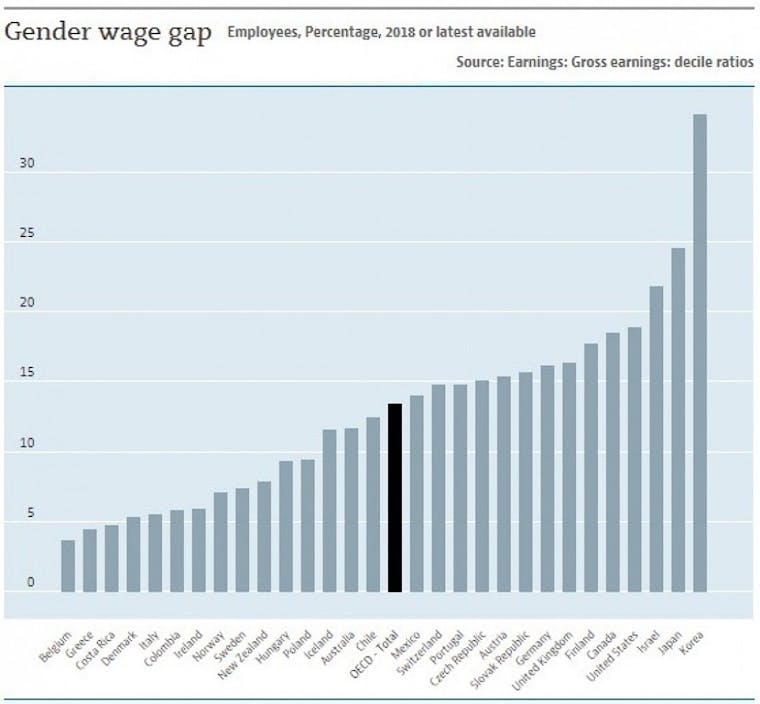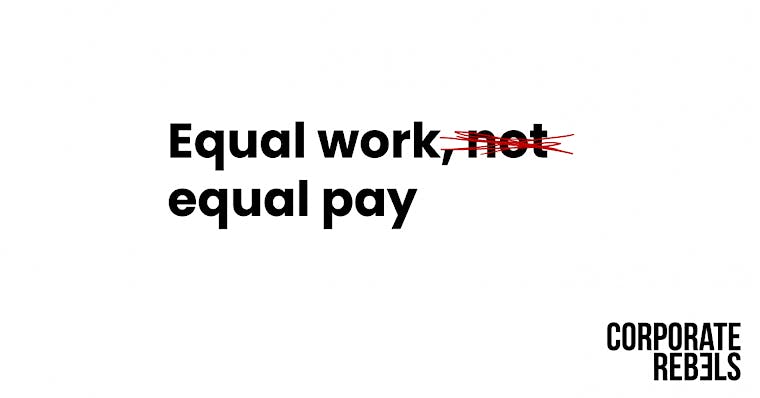Equal Work = Equal Pay (NOT!)

Equal work should mean equal pay. That's common sense, but not common practice. Consciously or unconsciously, many women are paid less for doing the same job as men. Luckily, some companies are actively fighting this medieval practice. One is Dutch financial service provider, APG.

APG provides financial services on behalf of pension funds and employers. They manage € 529 billion in assets for clients. With over 21,000 employers, APG provides pensions for one in five families in the Netherlands.
Gender pay gap
The gap between the salaries of men and women remains painfully large. In The Netherlands, the gender pay gap is 16 percent. A large portion of that (10%) can be explained. It has to do with (among other things) part-time work, and the fact that in lesser-paid jobs (like health care) there are more women than men.
So where does the remaining 6% come from? And why - even if you correct for these various factors - do women earn 6% less than men? There's simply no good explanation. This gap of 6% - and in many countries way more - has to be closed.

Recent research shows that 75% of employers believe the gender pay gap does not exist in their organization. However, it often does, and (unconsciously) these employers fall into traps that sustain it. For example, 53% of employers determine the salary of a new hire partly on the basis of their earlier salary. This perpetuates pay gaps. Additionally, 54% of employers admit to not actively encouraging women to move to higher positions.
This might not be done consciously, but it is still pretty damn painful.

Closing the gap
Based on findings like these, APG decided to investigate their own pay differences. HR Director Marloes Sengers took a serious look at their internal pay gap. About 1/3 (960 of 3,000 employees) are women.
The study revealed results that were not what they hoped for. A gender pay gap of 19% was revealed. When corrected for factors like part-time contracts, work experience, age, and other factors, a 2.2% difference remained.
Sengers told journalists: "I was dumbfounded, precisely because I thought that we wouldn't have such a gender pay gap. In discussions with the labor unions I suggested to increase the pay of all women, but they advised me otherwise. If we did that, it would lead to positive discrimination. They were right."
More research showed which women earned less than their male counterparts. A total of 125 women were identified, or 13% of all female staff. The remaining 87% were on a par with men.
APG took decisive action. The 125 women received a pay rise that brought their remuneration to the same level as male colleagues with similar positions, experience, and years of service.
Fixing the future
This is a powerful example of fixing the gender pay gap. But an important question remains: how does APG prevent this from happening again? On a deeper level, can it fix the underlying problems that caused the gap?
Sengers: “The difference in remuneration will also be solved by us in a sustainable way: financially and with additional attention to managers and employees. In this way we prevent a repetition in future and tackle the causes of the unequal pay in a sustainable and fundamental way.”
One of the actions is more research to understand the underlying causes. This could lead to added training to make managers and HR staff more aware of pitfalls in the hiring process, the promotion process, or during salary negotiations.
Marjolein Kort, one of the women at APG who received a rise is understandably satisfied. “But above all I feel proud to work for an organization that acts like this.”
And rightly so.
Leading the way
The big question is: will APG’s actions inspire other organizations to act as decisively? And what actions are needed to prevent such a gap from arising again in the future?
Some of the 100+ workplace pioneers we’ve visited have taken even more radical action to fix the discriminatory gender pay gap. For example, through salary transparency, a salary formula or by completely reinventing salary setting processes.
Which other pioneers have successfully closed the pay gap? And what practices have you seen? Help us - and your fellow rebels - out by adding your ideas and inspiration in the comments below.




